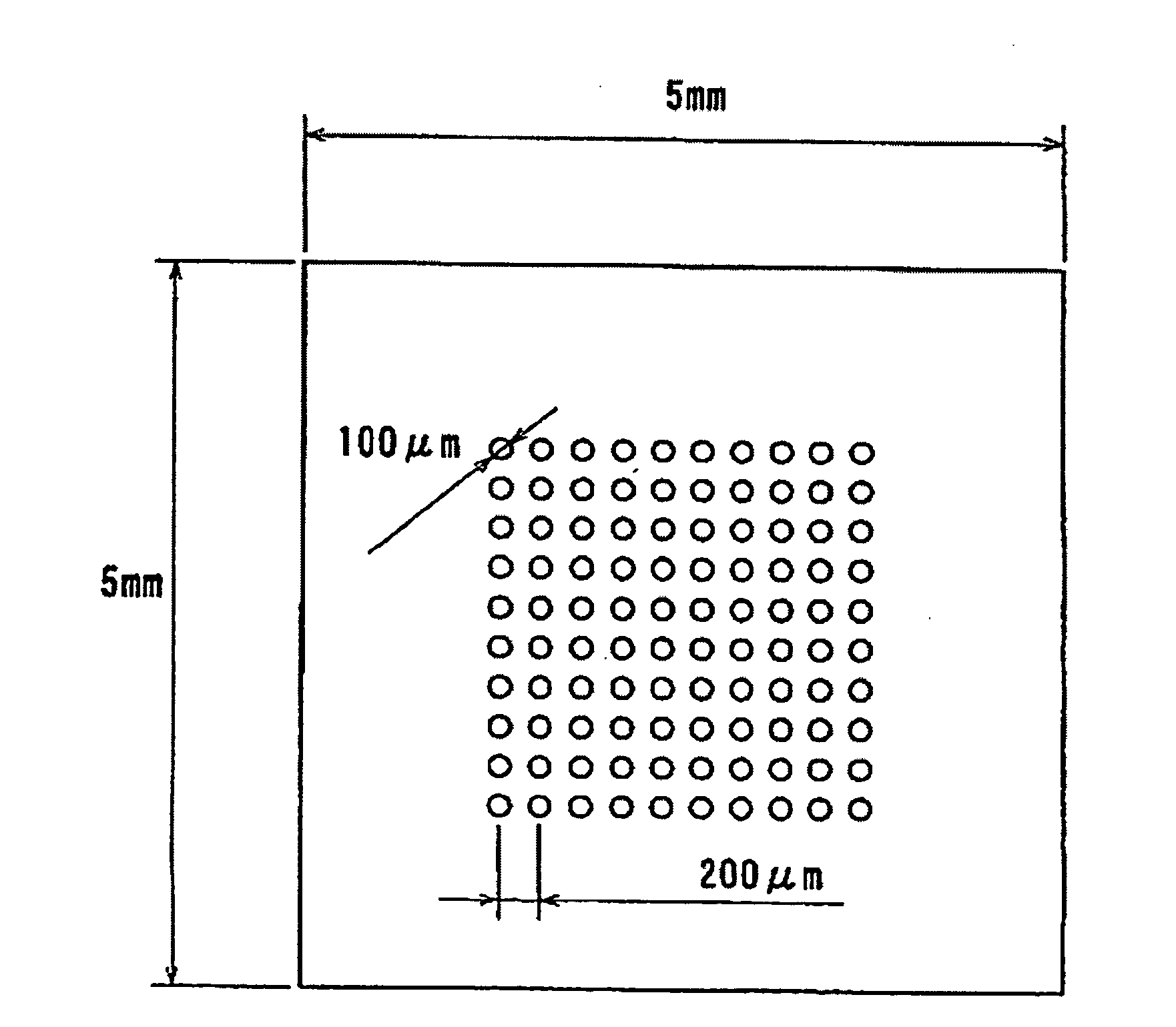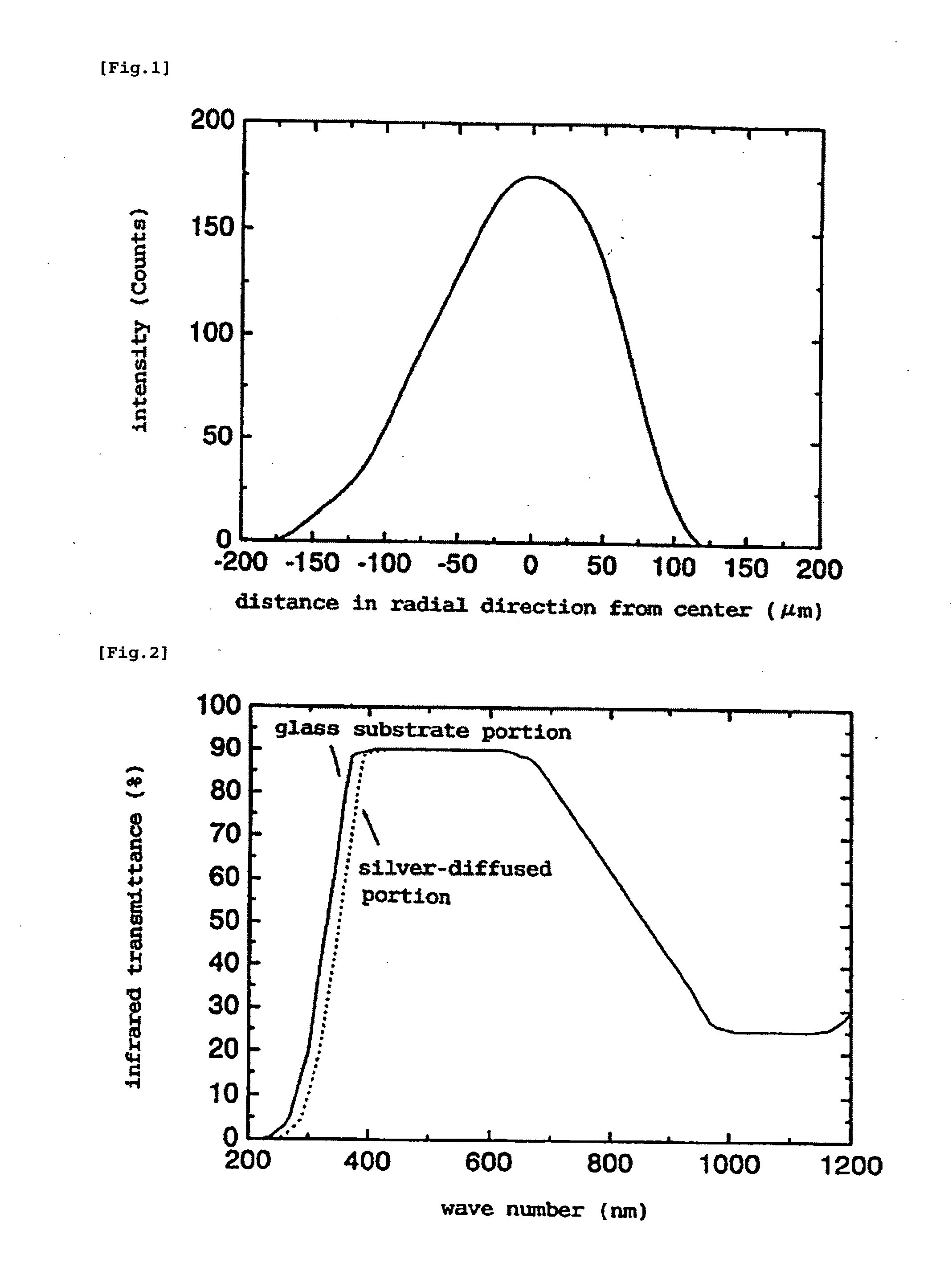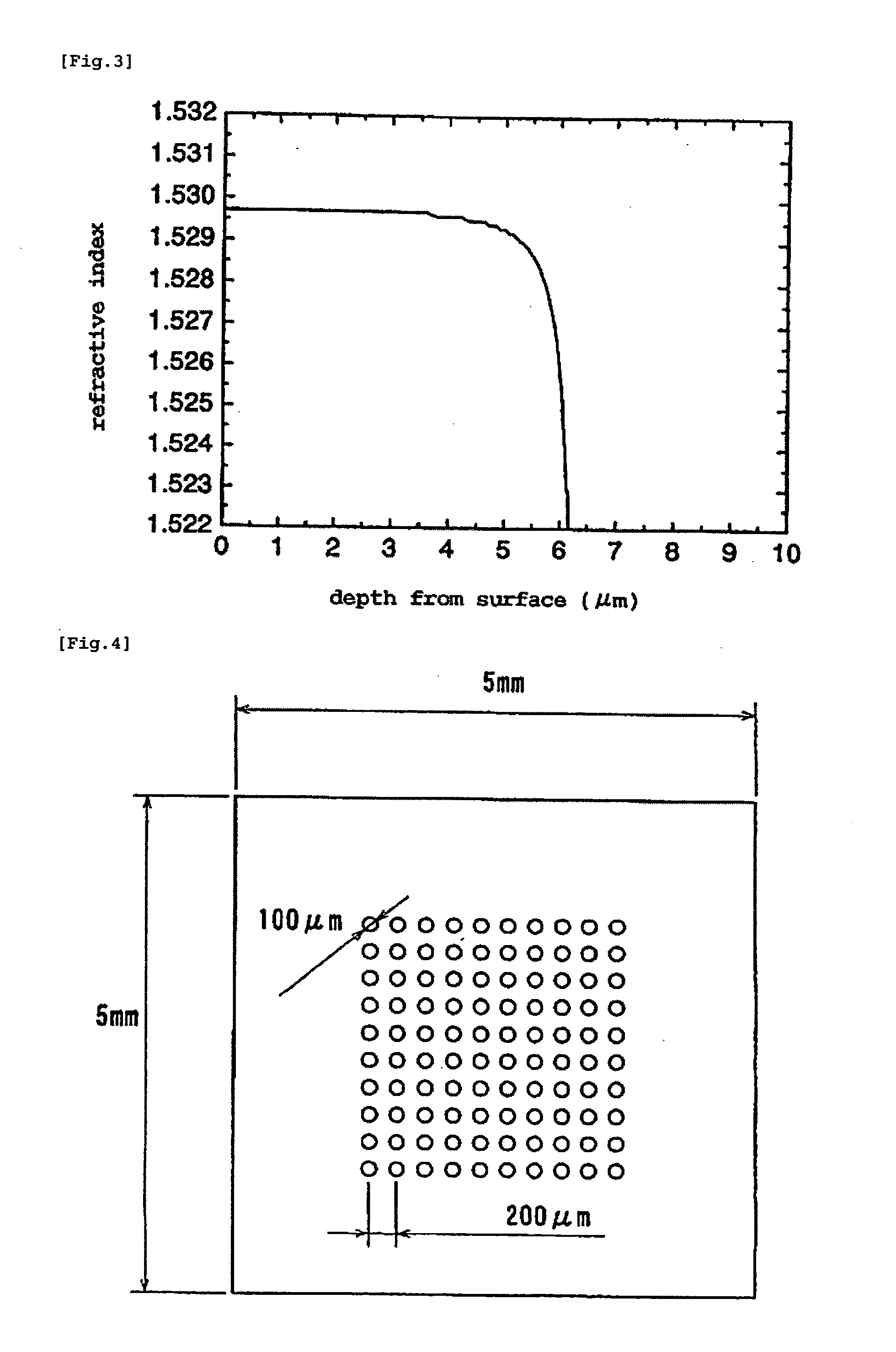Method for Manufacturing Gradient-Index Optical Element Having Infrared Absorbing Ability
- Summary
- Abstract
- Description
- Claims
- Application Information
AI Technical Summary
Benefits of technology
Problems solved by technology
Method used
Image
Examples
example 1
Production of Graded Refractive Index Microlens
[0109]A glass containing 68 wt. % of SiO2, 9 wt. % of CaO, 14 wt. % of Na2O, 1 wt. % of K2O, 1.5 wt. % of Al2O3, 2.4 wt. % of MgO and 3.1 wt. % of Fe2O3 was sized to 10 mm long×10 mm wide×1 mm thick for use as a glass substrate, and the surface thereof was washed.
[0110]A paste of 25 wt. % of AgNO3, 40 wt. % of NaNO3, 15 wt. % of acrylic resin, 15 wt. % of cellulose resin, and 5 wt. % of terpineol (the paste being prepared by mixing 20 parts by weight of organic solvent, 120 parts by weight of resin component, and 160 parts by weight of additive, per 100 parts by weight of silver compound) was applied dropwise using a syringe to one side of the glass to form a circle (diameter: 300 μm) to a thickness of 1 mm.
[0111]Subsequently, the pasted glass substrate was dried at 200° C. for 1 hour, and then heat-treated in air at 300° C. for 3 hours.
[0112]The silver distribution in the heat-treated sample was determined using an EDX (Energy Dispersi...
example 2
Production of Graded Refractive Index Microlens Array
[0116]A glass containing 51 wt. % of P2O5, 18 wt. % of ZnO, 6 wt. % of Al2O3, 5 wt. % of Li2O3, 10 wt. % of Na2O, 3 wt. % of CaO, 3 wt. % of MgO and 4 wt. % of CuO was sized to 5 mm long×5 mm wide×1 mm thick for use as a glass substrate, and the surface thereof was washed.
[0117]To one side of the glass substrate was applied a paste consisting of 25 wt. % of AgNO3, 40 wt. % of NaNO3, 15 wt. % of acrylic resin, 15 wt. % of cellulose resin and 5 wt. % terpineol (the one with 20 parts by weight of organic solvent, 120 parts by weight of resin component and 160 parts by weight of additives, per 100 parts by weight of silver compound; viscosity 10 cP at room temperature) by the ink-jet method to form a circle (diameter 100 μm). The application was performed to form 10 by 10 circles (total 100 dots) with a patterning interval (distance from the center of one circle to the center of the adjacent circle) of 200 μm to a paste thickness of 1...
PUM
| Property | Measurement | Unit |
|---|---|---|
| Thickness | aaaaa | aaaaa |
| Infrared transmittance | aaaaa | aaaaa |
| Distribution | aaaaa | aaaaa |
Abstract
Description
Claims
Application Information
 Login to View More
Login to View More - R&D
- Intellectual Property
- Life Sciences
- Materials
- Tech Scout
- Unparalleled Data Quality
- Higher Quality Content
- 60% Fewer Hallucinations
Browse by: Latest US Patents, China's latest patents, Technical Efficacy Thesaurus, Application Domain, Technology Topic, Popular Technical Reports.
© 2025 PatSnap. All rights reserved.Legal|Privacy policy|Modern Slavery Act Transparency Statement|Sitemap|About US| Contact US: help@patsnap.com



